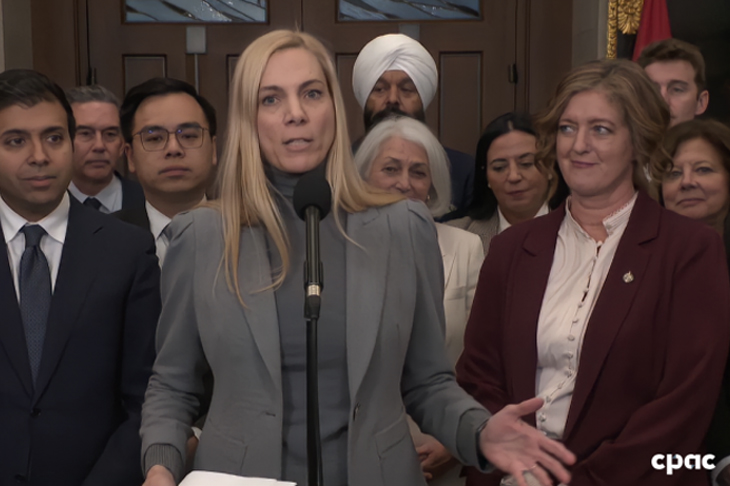By Greg O’Brien
GATINEAU – “Our initial capital budget for this coming year… was about $220 million. We’ve cut $60 million out of that. We’ve laid off people.”
This was part of the response from Eastlink CEO Lee Bragg when asked by CRTC commissioner Christopher MacDonald of the possible impact of a mandated mobile virtual network operator regime. Bragg said the fear of such a decision – coupled with the recent third party internet access decision on the wired side where Bragg says CRTC-set rates are below-cost and which it is fighting on many fronts – pushed the family-owned company into a full stop when it comes to spending growth capital.
“We’ve cut back on all of our rural expansion from a wireline standpoint and also because of our concerns associated with an MVNO process and not getting the costing right, we decided to cut back 100% of all our cellular expansion,” Bragg continued during his company’s Friday appearance at the CRTC’s wireless policy review hearing.
“We’ve put on hold all of our cellular plans because we could not take the risk of spending that money and building that infrastructure just to have MVNO rates done incorrectly… and be stuck with having people access our customers and not get a reasonable return. Yes, we’ve stopped our wireless rollout because of TPIA, but it’s because if the same principles in TPIA get applied to cellular, we can’t strand that capital… One bad decision led us to believe maybe there’ll be another.”
Eastlink, of course, is sometimes referred to in the industry as the Rogers of Nova Scotia and PEI, since it has a broad wired network in those two provinces and has added wireless to it in recent years. The company has also added wireless to other regions in which it has wired assets such as Sudbury and Timmins, Ontario and Grande Prairie, Alberta. That said, Eastlink has also grown its wireless network into New Brunswick and Newfoundland, outside its wired footprint.
The Halifax-based company was very much on side with the other facilities-based operators when it comes to any of the proposed MVNO models under discussion during this hearing (they prefer none), while noting the Competition Bureau model, which we have covered here, could be acceptable because it would aid Eastlink’s speed to market in regions where it has spectrum but has not yet launched. “It’s not all bad,” Bragg said. “It depends on the rate, but it could be advantageous to us.”
“We do not support in any way, shape, or form, a mandated full MVNO or a version of that that does not involve the MVNO operator operating without licenced spectrum,” added Eastlink’s vice-president of regulatory Natalie MacDonald.
However, she blasted the organizations which are asking for a full MVNO, such as the Canadian Network Operators Consortium and Distributel, who appeared at the hearing Thursday, saying MVNOs are needed for better competition in the market, but who did not coming to the hearing with a business plan.
“They came here after almost a year, companies that claim they want access to provide valuable services to Canadians that are unique and different but they did not have one example of the type of package or service that they thought they could bring to the market.” – Natalie MacDonald, Eastlink
“We listened to Distributel and CNOC… they told us they want access, they don’t want to build facilities while some have implied they may invest in something, but they came here after almost a year, companies that claim they want access to provide valuable services to Canadians that are unique and different but they did not have one example of the type of package or service that they thought they could bring to the market – and the reason is they did not think through a business model.”
(Ed note: The MVNO proponents, too, may be waiting on what wholesale rates might be.)
MacDonald and Bragg also told commissioners that the current system, where Eastlink finds access to incumbents infrastructure like towers too slow and wholesale roaming rates still too high, should be higher on the CRTC’s competitive priorities rather than trying to bring another level of “reseller” competition to the market.
Bragg also insisted he has seen no evidence so far in the proceeding that demonstrates the wireless market is not competitive and the push for MVNOs is driven more by companies who simply want an easier way into the wireless business and want the regulator to pave the way. “Why would we risk stopping all investment and destroying all the progress we’ve made just because a handful of people are trying to make an argument they want to get into this business? It seems a little ridiculous to me.”
Bragg and MacDonald also addressed a challenge all recognize – that gaining spectrum in an auction is very expensive and the blocks on offer are far larger than some operators would want or need to acquire. Cogeco has many spectrum assets, but none in its Oakville-Hamilton corridor, for example, because they would have had to purchase huge chunks of southern Ontario blocks which it has said it could not afford.
Innovation, Science and Economic Development Canada has said it is looking at auctioning off spectrum in smaller geographic blocks to make it more accessible and affordable and perhaps open up the wireless market to smaller or new players. If the government does that when it announces the structure of the 3500 MHz auction, said Bragg, “then we’re just in a economy of scale argument where I don’t think that’s under regulatory jurisdiction.
“Then it comes back to ‘well, I want to be in this business and I’m too small,’ well… sometimes that’s just too bad.”
The hearing continues Monday with a number of organizations, including TbayTel and the Canadian Communications Systems Alliance.
Photo of Lee Bragg talking to a CBC reporter by Greg O’Brien.





